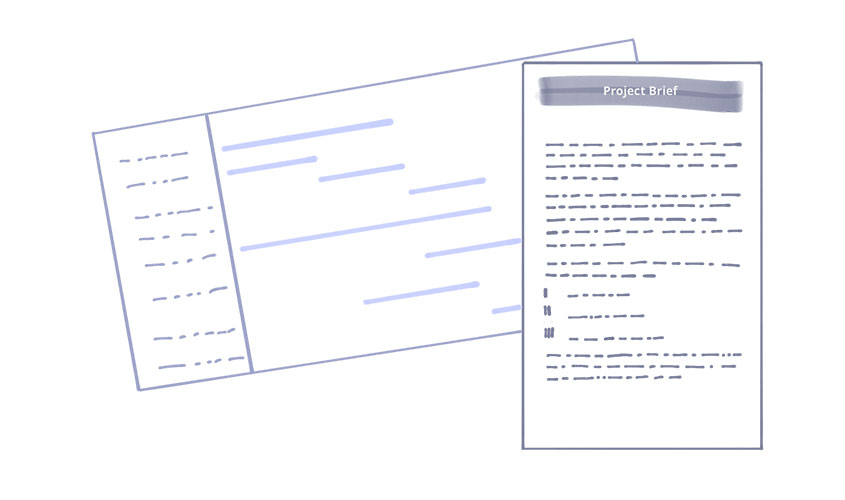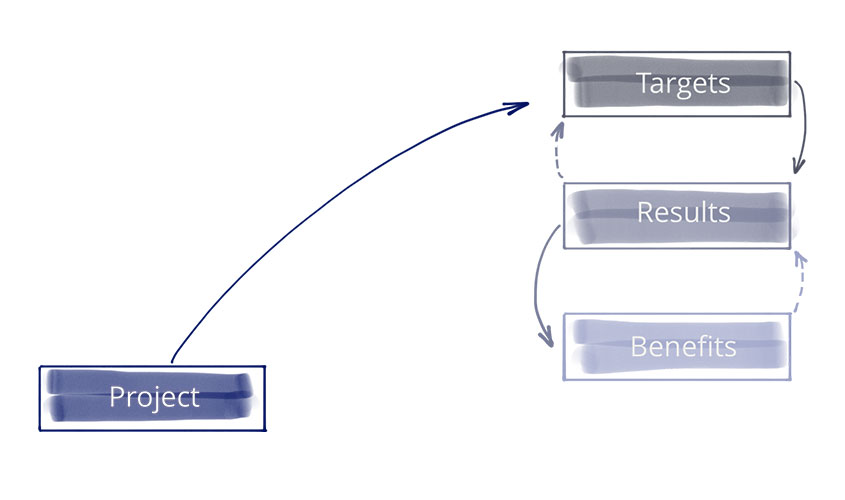Three steps to project success

The project of launching into a new line of business was going off really well: highly motivated, the project team was supported by the board and all important internal and external stakeholders. But it only took a few weeks until there was a spanner in the works. The expected project targets of the different stakeholders seemed to be shifting from one week to the next, the project lead was facing ever new expectations of results and after a while the first doubts about the whole project’s usefulness for the enterprise were voiced. After only three months essential resources were withdrawn from the project and six weeks later the project came to a final halt.
Such or similar situations unfortunately occur rather frequently. Projects are being initiated and planned in the best possible way, but then they are lagging behind expectations or are being stopped half-way. In most cases what is at the heart of this failure is not the way project activities were planned or managed, but often a bad set-up. If you take the following three-step approach, you can avoid the most common pitfalls and significantly increase your chances for project success.
The qualitative and quantitative description of targets for the identified parameters should be a matter of course – regardless of whether these are strategic projects or, as described in this article, optimization initiatives.
Defining the target
When a project is being outlined, first and foremost its targets should be clearly defined. These targets describe what the project should achieve in the organisation’s business. The more precise and specific the definition of these targets, the easier it will be to plan the project and assess at what stage it will be judged successful.
If you set out to define your project’s targets in a way that is clear to all, you need to pay careful attention to your wording. The language you use should be succinct, unambiguous and easy to understand. In this way you will ensure that everybody has the same understanding of what you are saying.
To make the description of your project targets more objective, it is helpful to set up KPIs. Make sure, however, that they really reflect the established targets and are not just measurable but arbitrary variables, irrelevant for target achievement.
Finally, you should formulate target values for these KPIs. Again, this will guarantee that all people involved in the project will have the same idea of what the project is to achieve and when exactly this will be the case.
Describing project results
Having defined the project’s targets, you need to formulate the expected results. While the targets of a project say what is to be achieved by the project, project results describe what the project team has to deliver to the client after the project’s completion or at adequate milestones.
This can comprise reports, technical documents, prototypes or other things, depending on the project’s nature and its context.
With project results, just as is true for target definitions, the first step should be a description of expected project results. Bear in mind to note down not only the final, but also possible interim results, especially so if they represent crucial milestones for the further development of the project.
Next you should negotiate with your client about the form in which the results are to be handed in. The better you pin down deadlines and details even before the project is kicked off, the less you will need to double-check and revise while the project is on, when usually there is no time for lengthy discussions.
Before you go on to the next stage in defining the project, you should align the expected results with the initially set targets. The project results should always explicitly refer to the project’s targets or should make it clear that the targets have already been reached. Any discrepancy between the project’s targets and its results strongly suggests that targets or results have not, or only poorly, been put into words.
Specifying the project’s benefit
The third step links the project with its context by outlining its benefit for the company. This brings in questions like: “What problem is the project meant to solve?” Or: “How is the project connected with other activities?”
If you have found satisfying answers to these strategic questions, you should align them with the set targets by finding out if reaching these targets will really lead to the expected benefit. Should this not be the case, you will have to modify the targets.
Similarly, you should check if the expected results accord with the intended benefit. Again, if these two elements do not match you should make necessary adjustments to the results.
Having completed all three stages of project start-up, you can be sure that your project will be integrated into the strategic framework of the company and that clients, stakeholders and project team members alike will have the same understanding of the project’s targets and results – the bottom line of project success.




